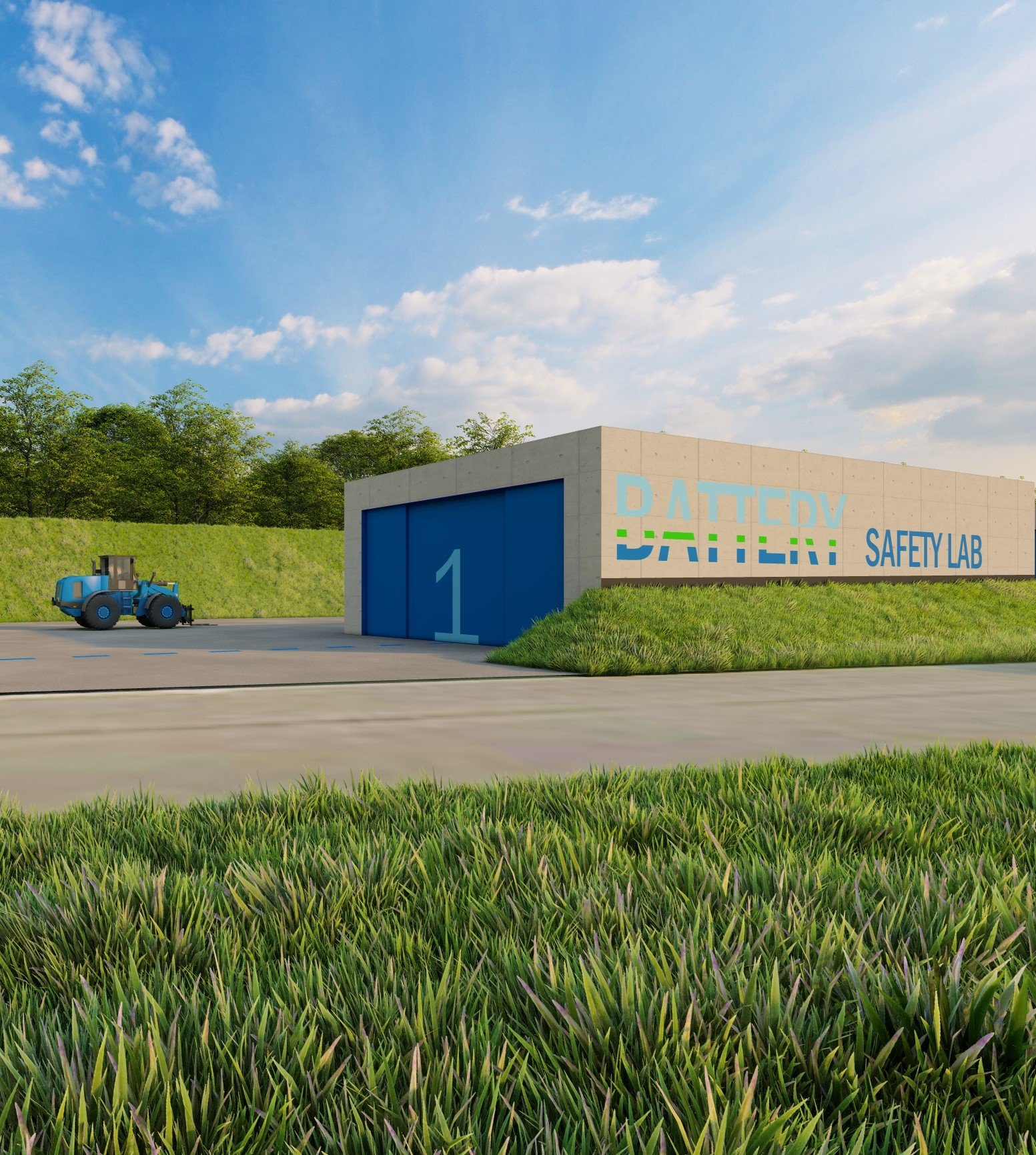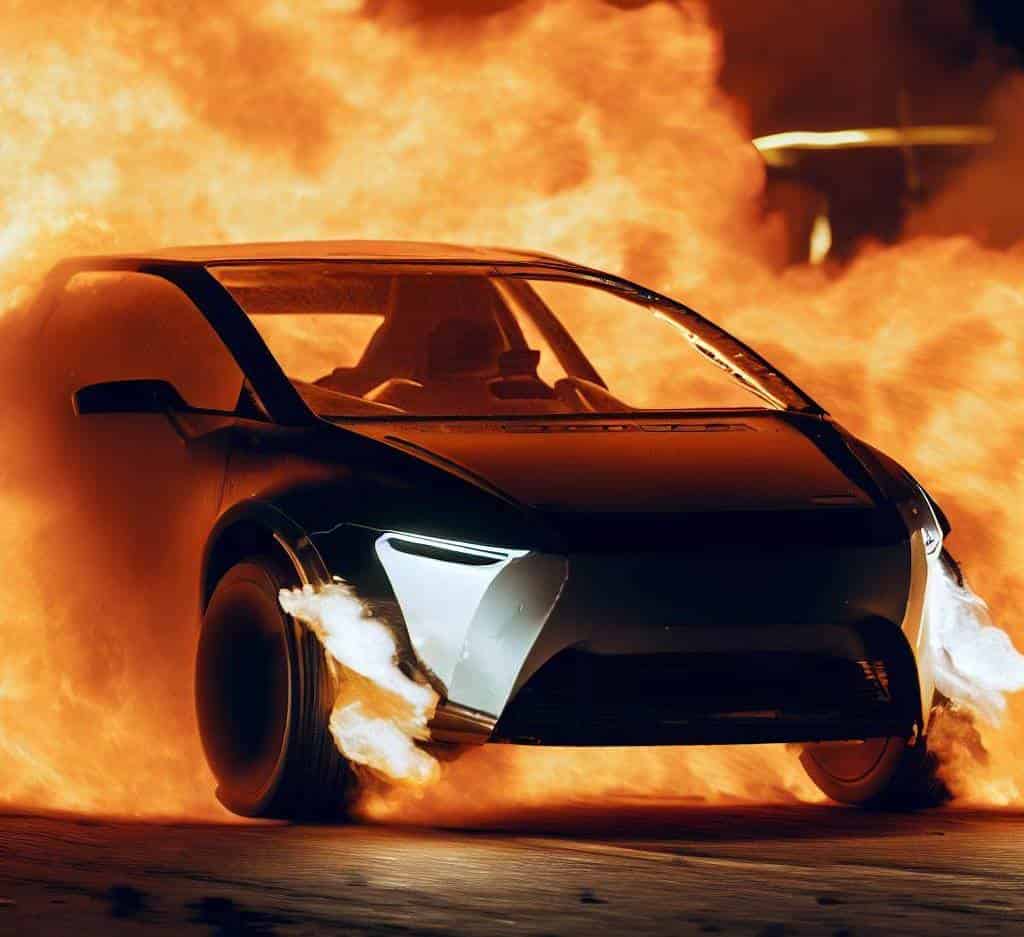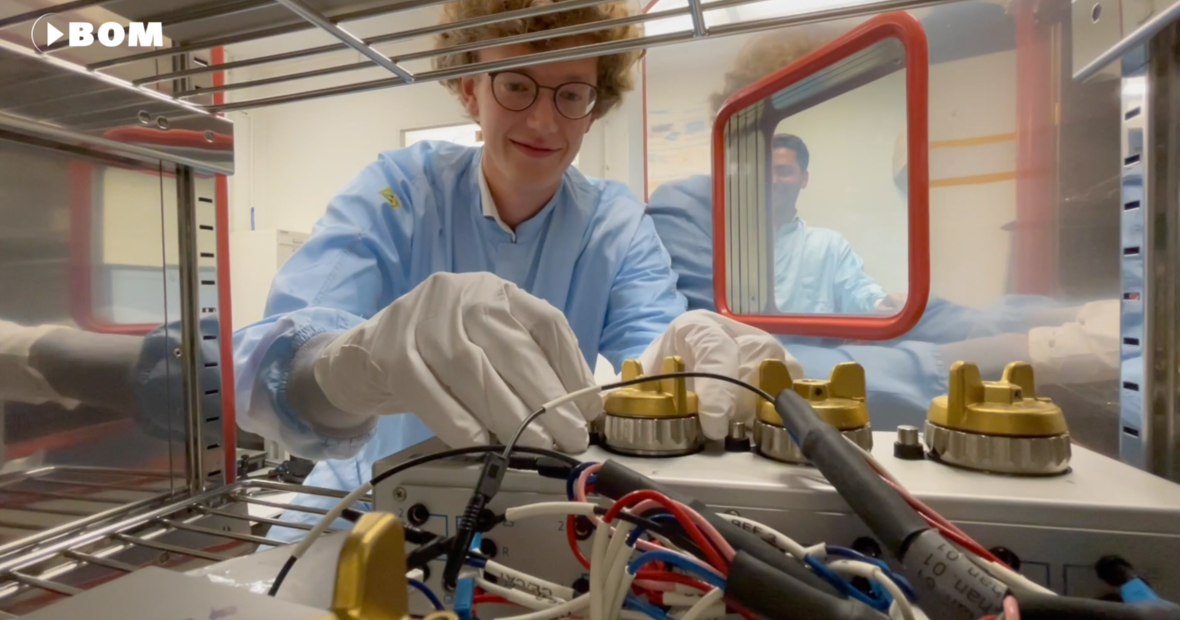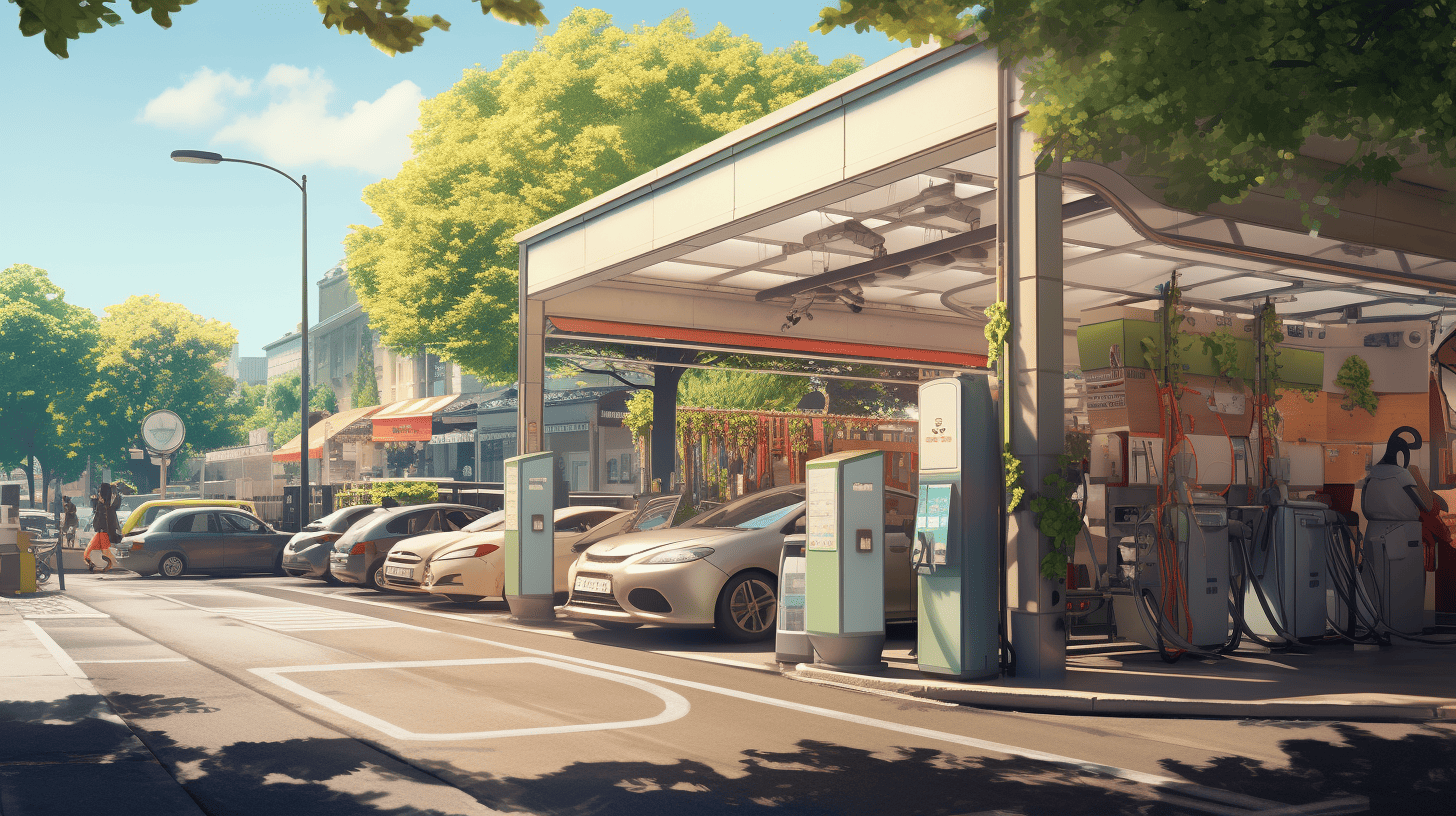
Batteries are playing an important key role in the transition to a sustainable future. In the Dutch province of Twente, knowledge institutions and the business community are taking battery technology to the next level. Mark Huijben, a professor at the University of Twente, recently made a new discovery: a new material for use in batteries which enables a much higher charging rate. More is happening in the region too. How can you be sure that a battery will not catch fire? A brand new Battery Safety Lab is being set up there to figure this out.
Batteries are part and parcel of a green future. They make transportation in electric cars and buses feasible and play a role in the storage of sustainable energy. Several companies in the Twente region are working on the application of battery systems. For example, Demcon develops new manufacturing technology for high-performance batteries, and Super B supplies battery systems for a wide range of electric vehicles.
Also at the University of Twente, research into battery technology is not standing still and all of these activities have been brought together within the Twente Centre for Advanced Battery Technology. As technology advances, the demands on batteries continue to increase. For applications in electric transport, a battery must not only be capable of recharging quickly, but also have a high energy density in order to be able to cover long distances. In practice, there’s often a trade off between fast charging and energy density. Professor Huijben’s invention is about to change that.
Higher charging speed
By using a completely new material, nickel niobate, to make the anode of lithium-ion batteries, the charging rate can be increased up to ten times. Huijben: “You can use it to recharge ultra-fast and in addition, the amount of energy that can be put into it is still high. Higher than with the materials for fast charging that were available to date.” Besides a high charging speed, the material also has other advantages. For example, today’s industry can easily make use of it. “Everyone is familiar with them: cylindrical batteries. The automotive industry still uses them. But a telephone battery has a different shape. The material we have developed does not pose an obstacle in this respect. You can use it in different forms.”

Trucks and buses
There are obvious applications where the charging speed counts. But the discharge speed is also important. Delivering a lot of power fast as well as getting it back up to speed quickly. Huijben indicates that freight and bus traffic in particular will benefit from this discovery. “Not a single material can be charged at an ultra-fast rate and still contain a lot of energy. You have to make choices. If we look at electric cars, then you don’t want to compromise on the maximum range that you can drive. What’s more, charging in half an hour, rather than a few minutes, is basically fine. So I expect that we will see our fast-charging battery primarily in trucks and buses, where speed is even more of a concern. And where a larger battery – and therefore a bit more weight – is not an issue either.”
Next steps
At present, the application is still in the research phase. ” There are questions that we still need to get answers to. For example, what happens if we replace lithium, an element that is now always used in batteries, with another element? Lithium is in limited supply on earth. So what if we replace it with a more sustainable material such as sodium, which we can extract from seawater?
Apart from that, the professor is in discussions with industry. “What is the next step for us to start testing our material on a large scale? Which partners can we start working with? There is already a lot of focus in the industry on materials that are used in fast charging. If you just look at the companies that are working on batteries here in Twente, you can see that steps are being taken in all directions, and that in the future, we will see more and more applications where batteries are concerned. Large companies like Toyota are also pressing ahead to take batteries to the next level. This company has its own large research facility and is banking on the solid-state battery, which is a lot safer than liquid-based batteries. They may well be bringing that to the market in the next few years.”
Dutch companies
According to Huijben, several Dutch companies will make use of his invention in the future. “There are partnerships set up in the Netherlands where knowledge institutions, the industry and ministries work together to raise the level of knowledge about batteries. These include major players such as VDL, which focuses on buses, DAF, which focuses on trucks, and Damen, which deals with transport on water. We will jointly explore all the possibilities that are open to us. I’m confident that manufacturers will start working with this new material in the future.”
Battery Safety Lab
Yet more is happening in Twente in terms of batteries. For example, a Battery Safety Lab (BSL), a collaboration between the Twente Safety Campus and the company Det Norske Veritas (DNV), will be set up at the end of this year. The lab will perform fire safety tests on batteries and battery storage systems. Whereas Huijben focuses on individual cells, BSL looks at complete battery packs: from small batteries in electric bicycles, to the 100 kilowatt-hour batteries in a Tesla.
A unique project
Tanja Guyken is the project manager of the BSL. “It’s a pretty unique project. This is going to be the first test center in Europe. Tests with batteries are still being done in the backyard. There is currently very little regulation for it, but we expect the government to start taking extra steps here over the next few years. Safety above all else: if a manufacturer sells a battery for electric cars, they must be able to demonstrate what will happen in the event that a battery catches fire.”

At BSL, companies can get answers to questions concerning fire safety. “Will the fire be limited to one module? And is a battery fireproof if you drop it? You hope that it is, of course, but if it isn’t, we have a gas scrubber system that filters harmful substances out of the smoke. That’s how we keep it safe for people who are in the surrounding area.”
The fire department is also involved in the BSL. ” By doing this, we as firefighters also gain knowledge about the fire behaviour of battery packs so that we can advise fellow firefighters on adequate firefighting techniques and also make our contribution to the energy transition,” Guykens says.
End of the year
Guyken is expecting to have the permits that are needed for the property within six months. “And right after that, we can start construction. I expect that the BSL will be in use by the end of this year.”
Also interesting: First-of-its-kind independent comparable battery test for e-vehicles launches








